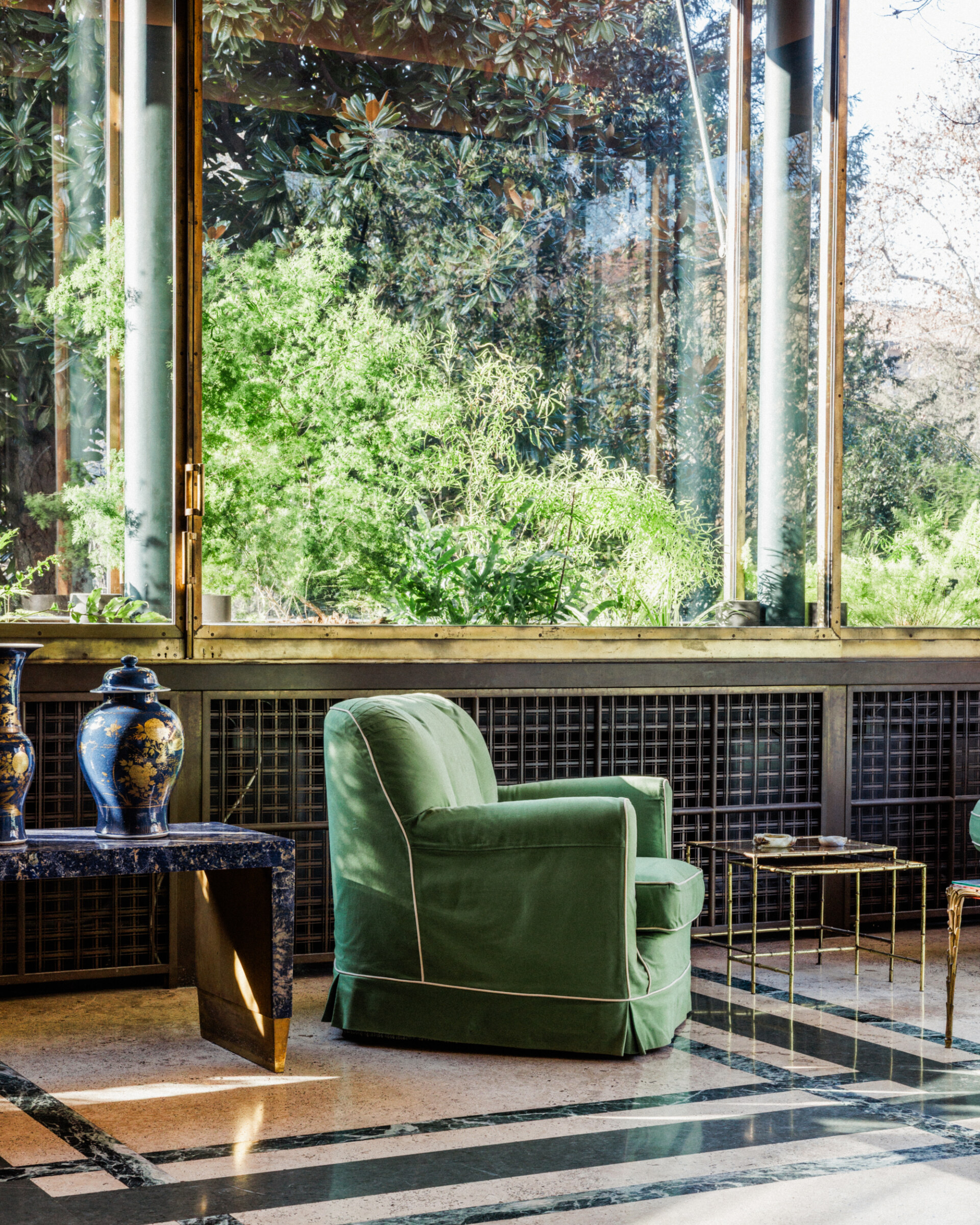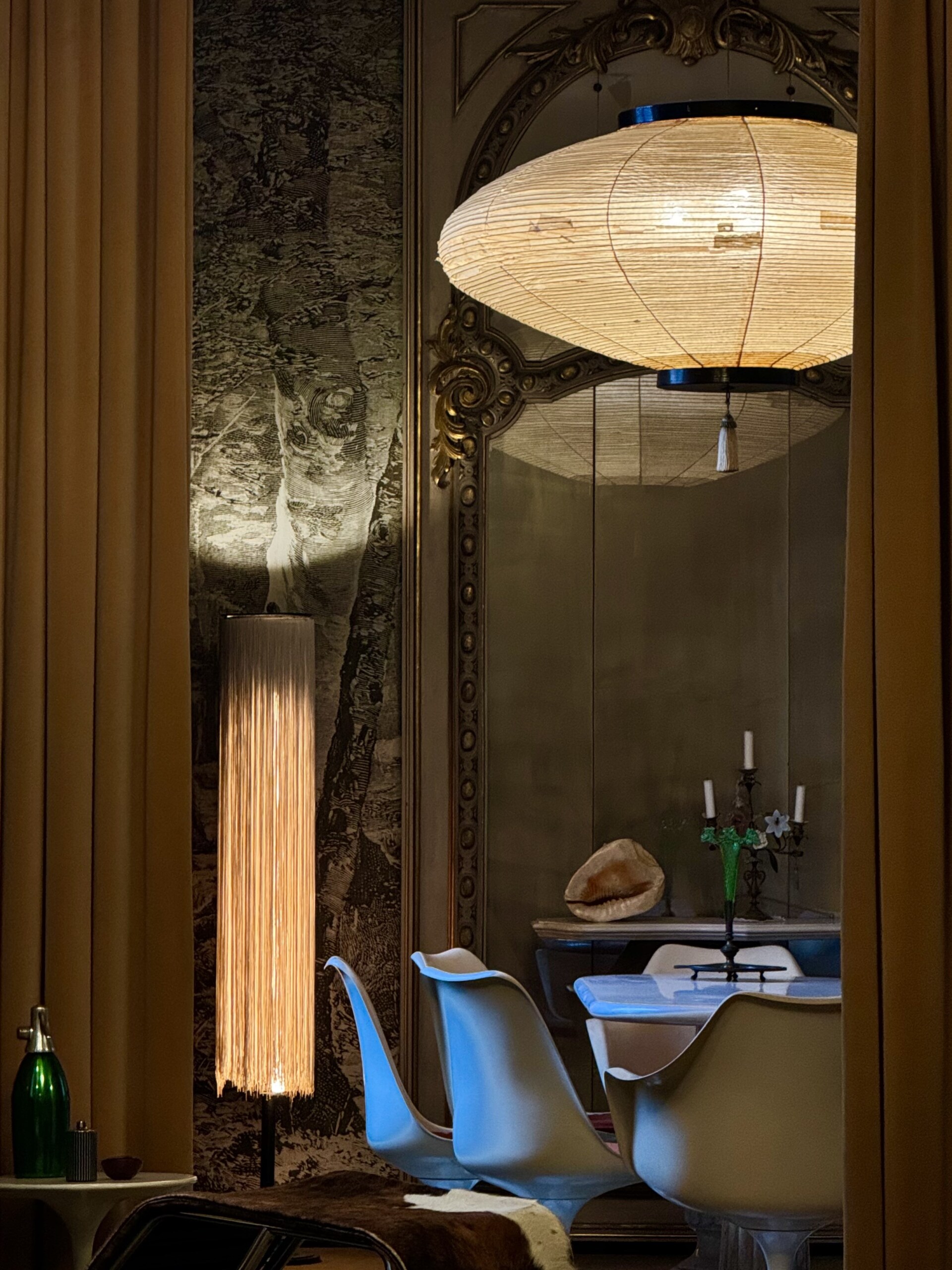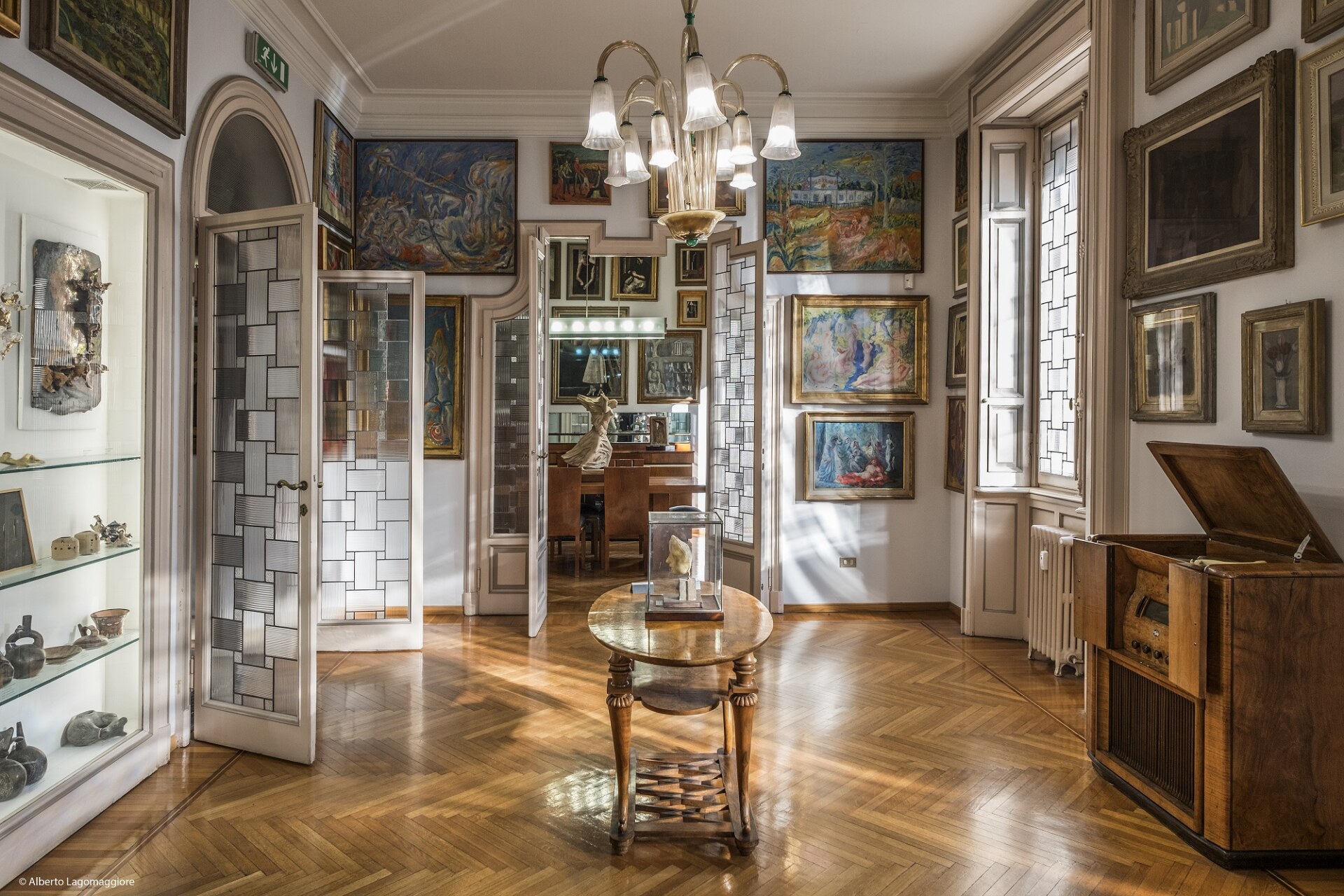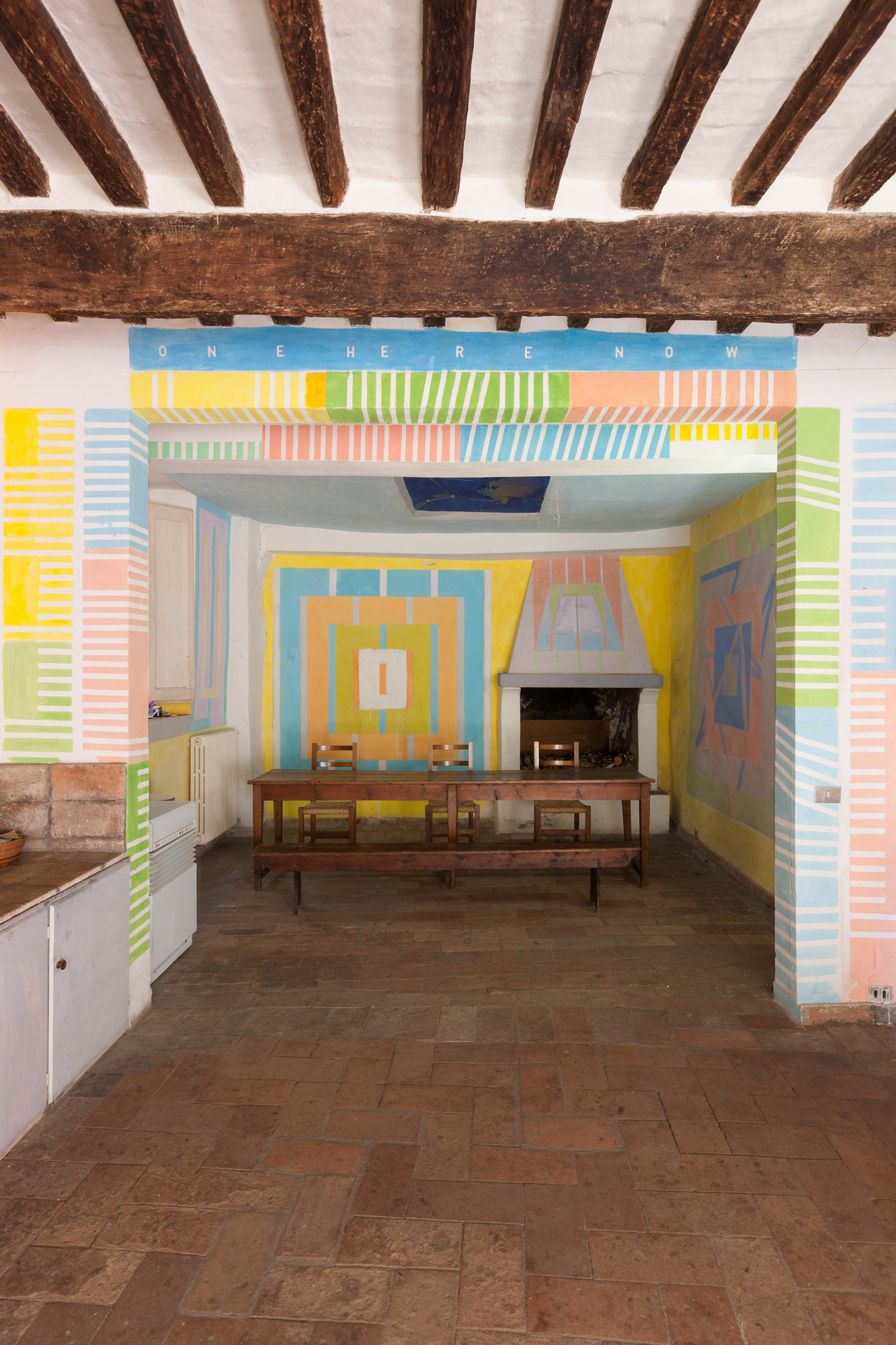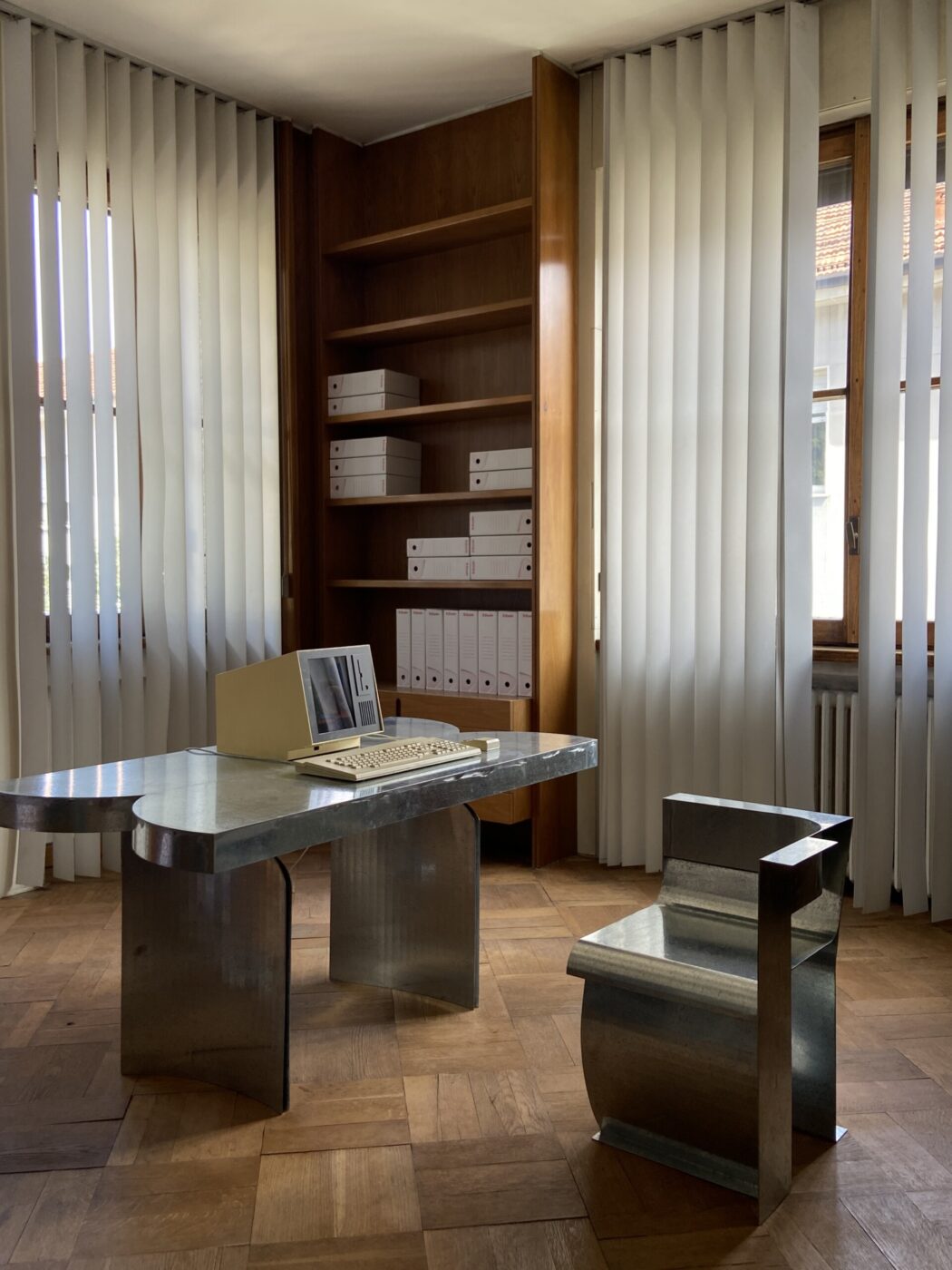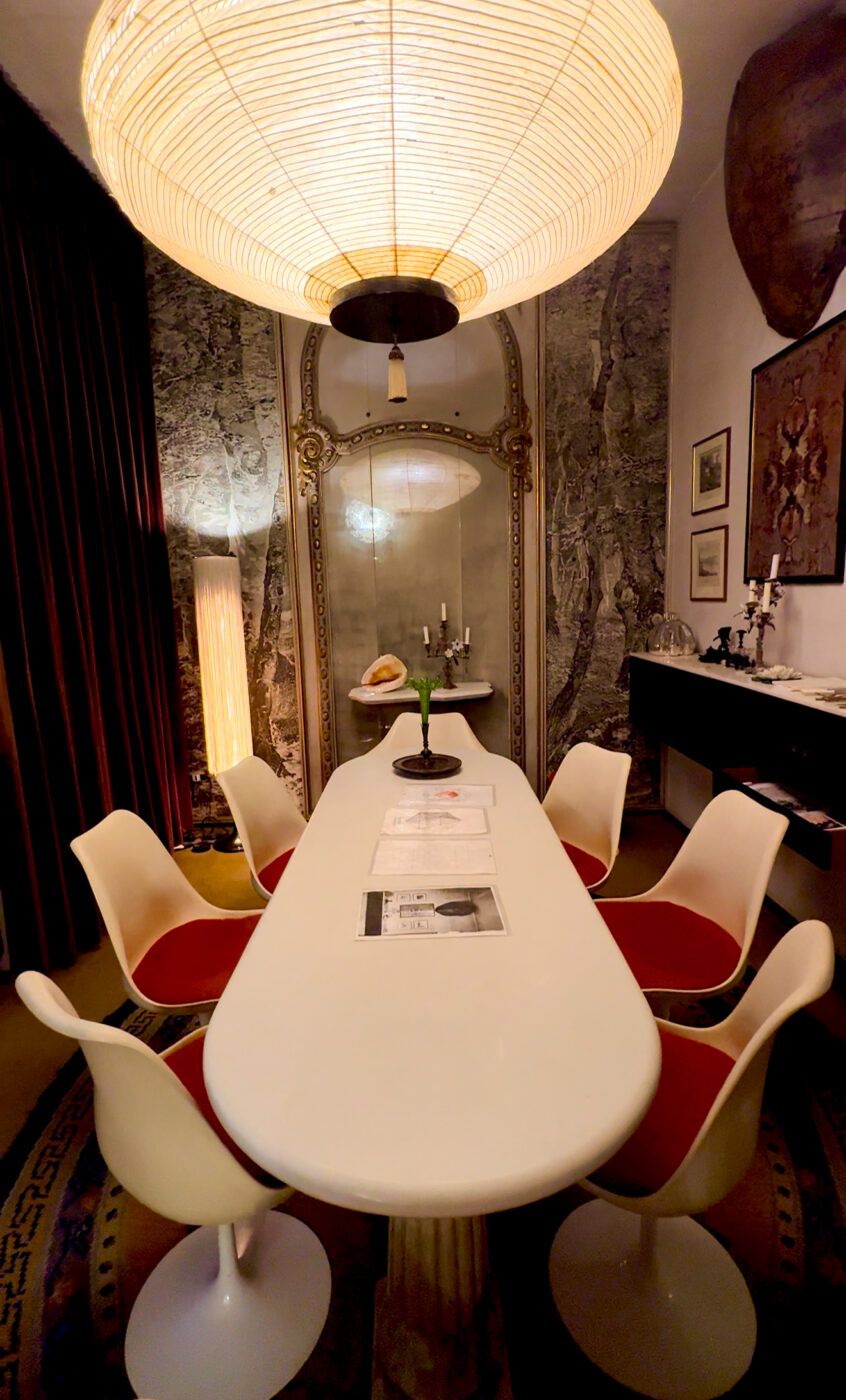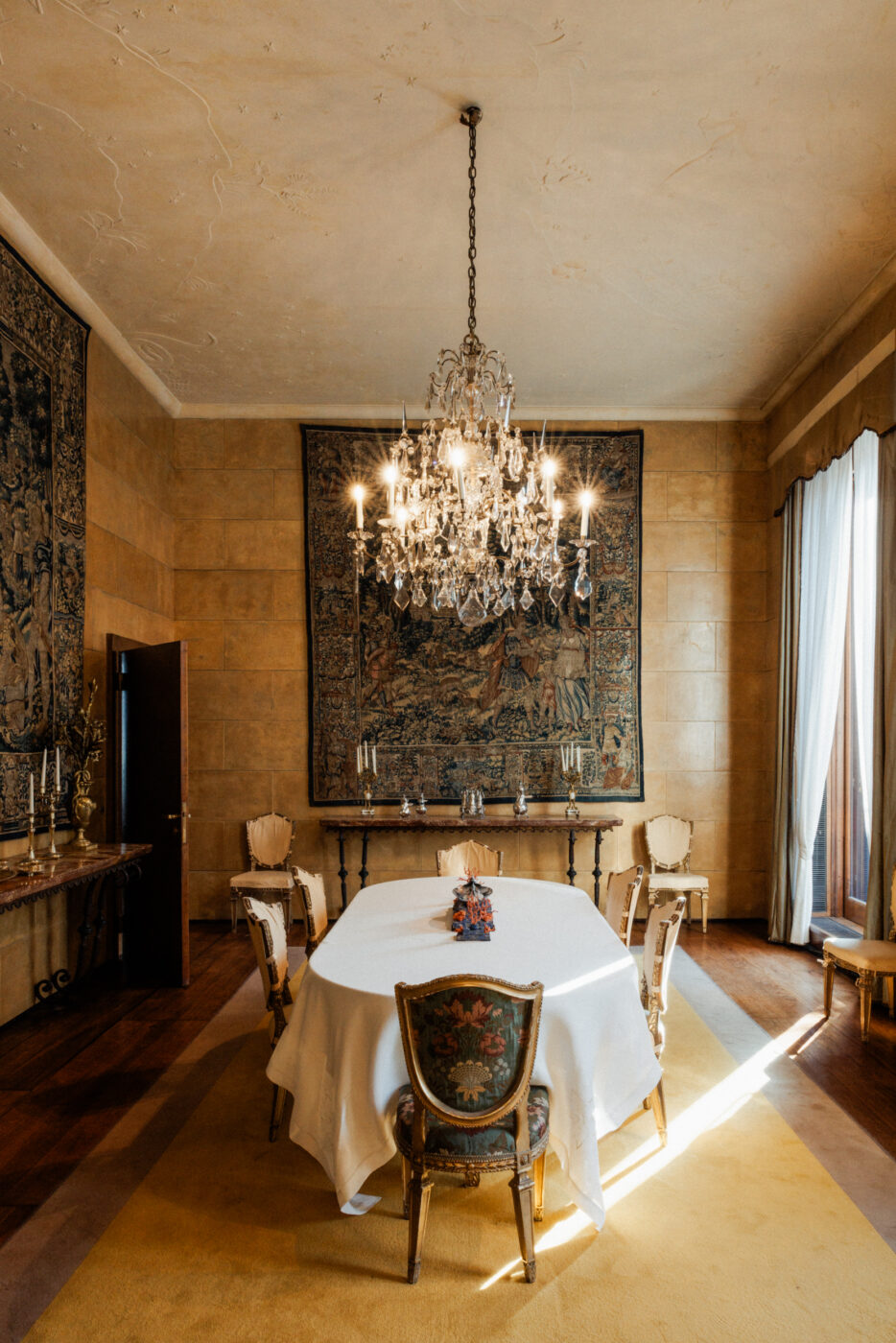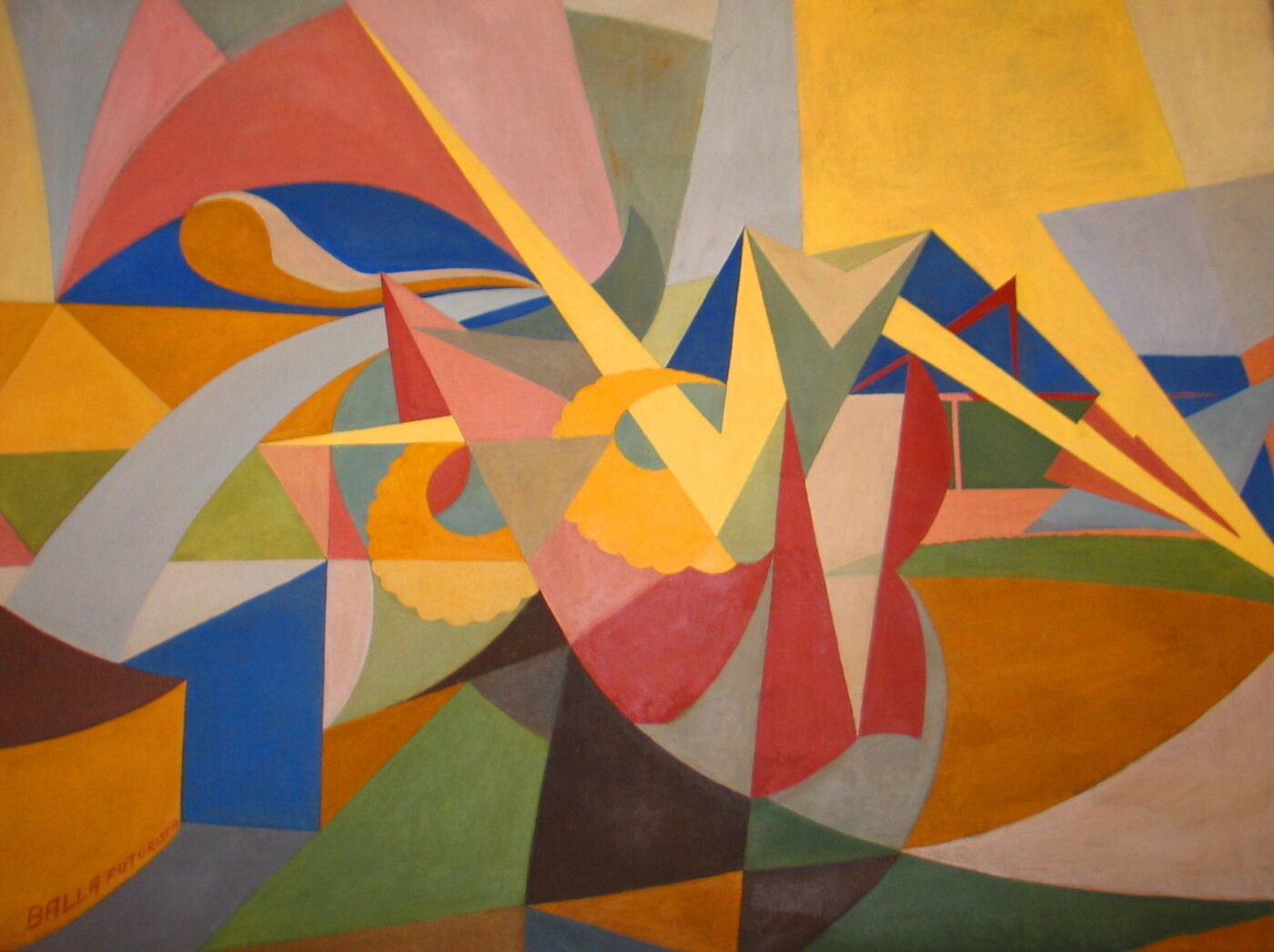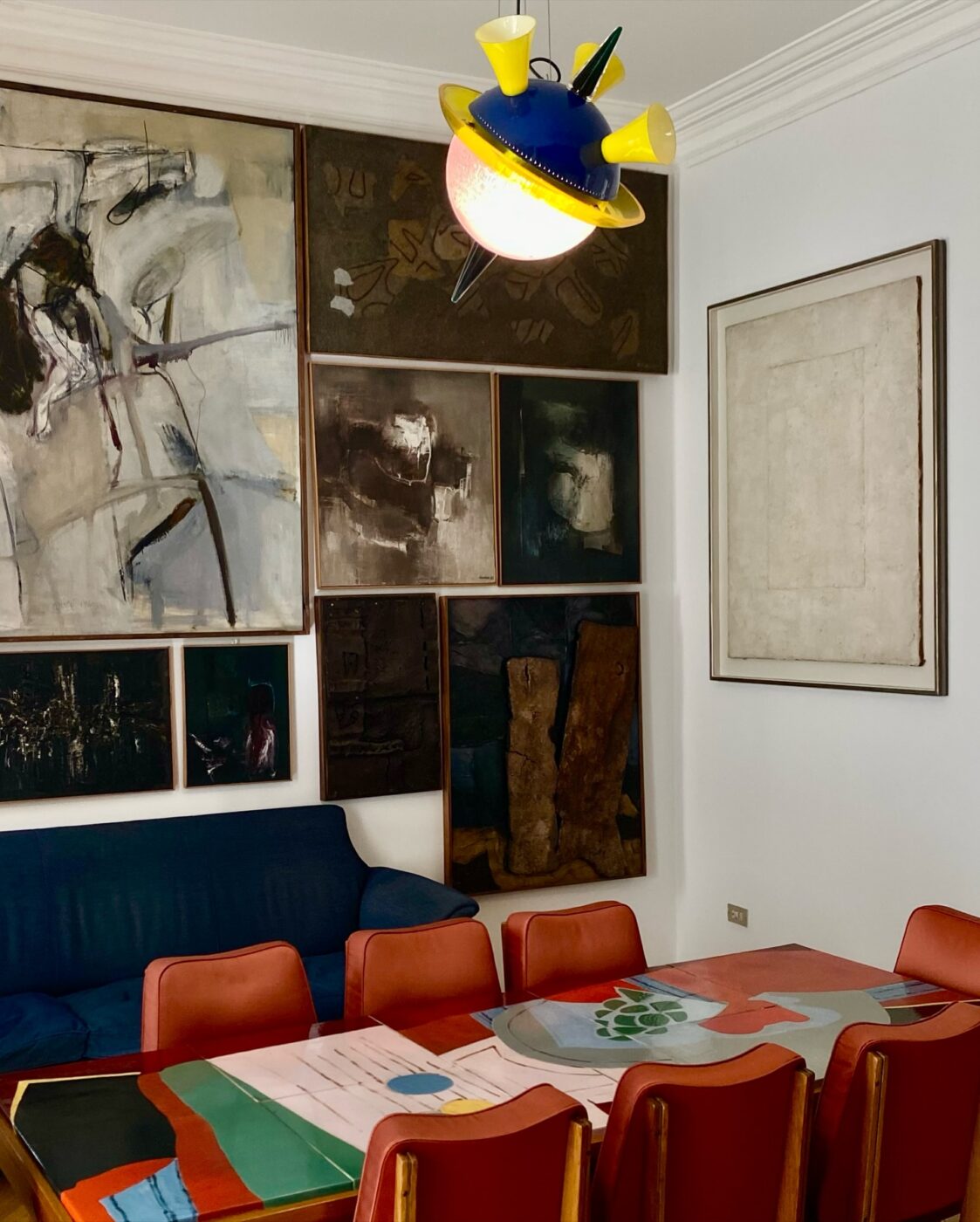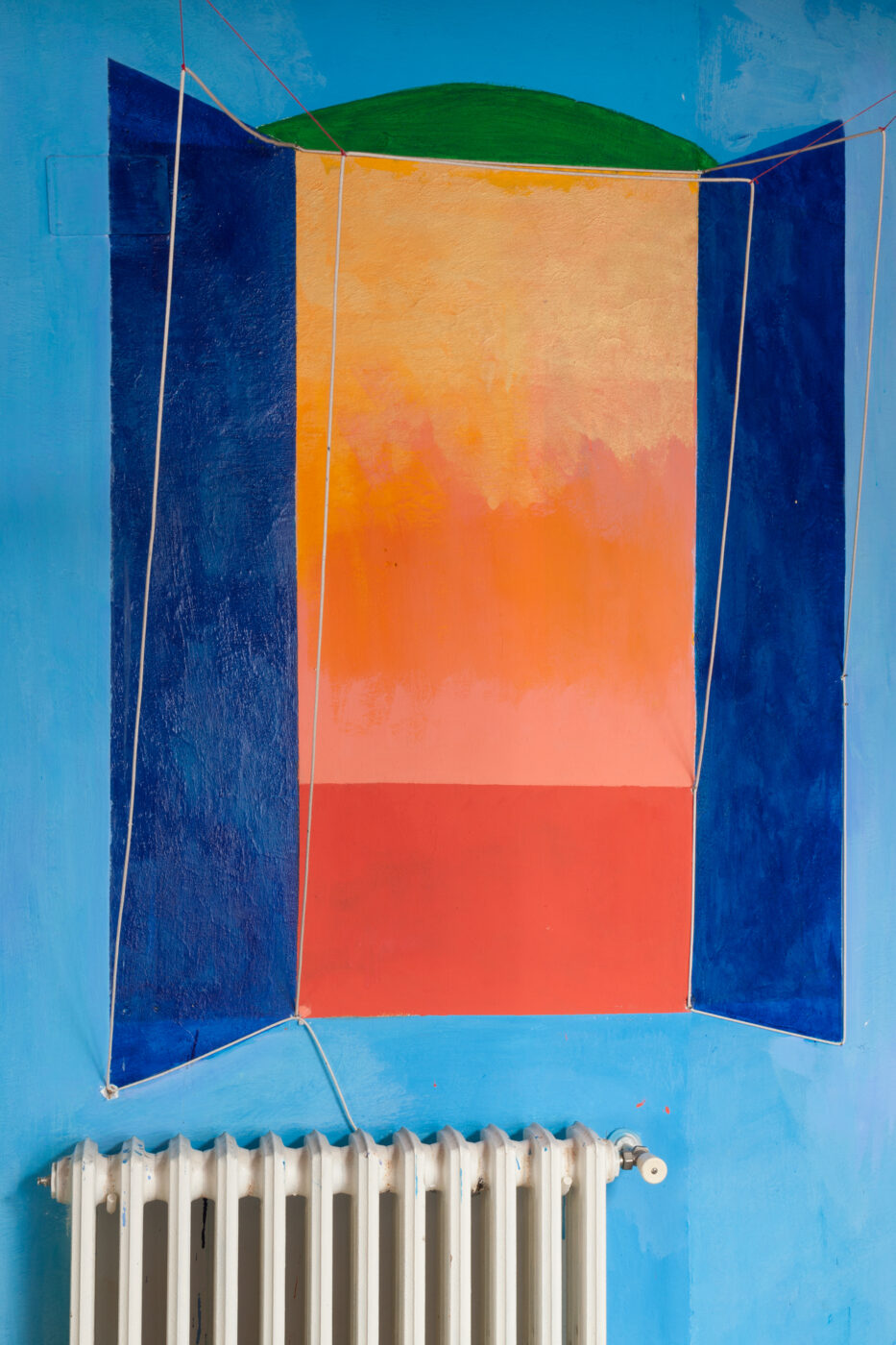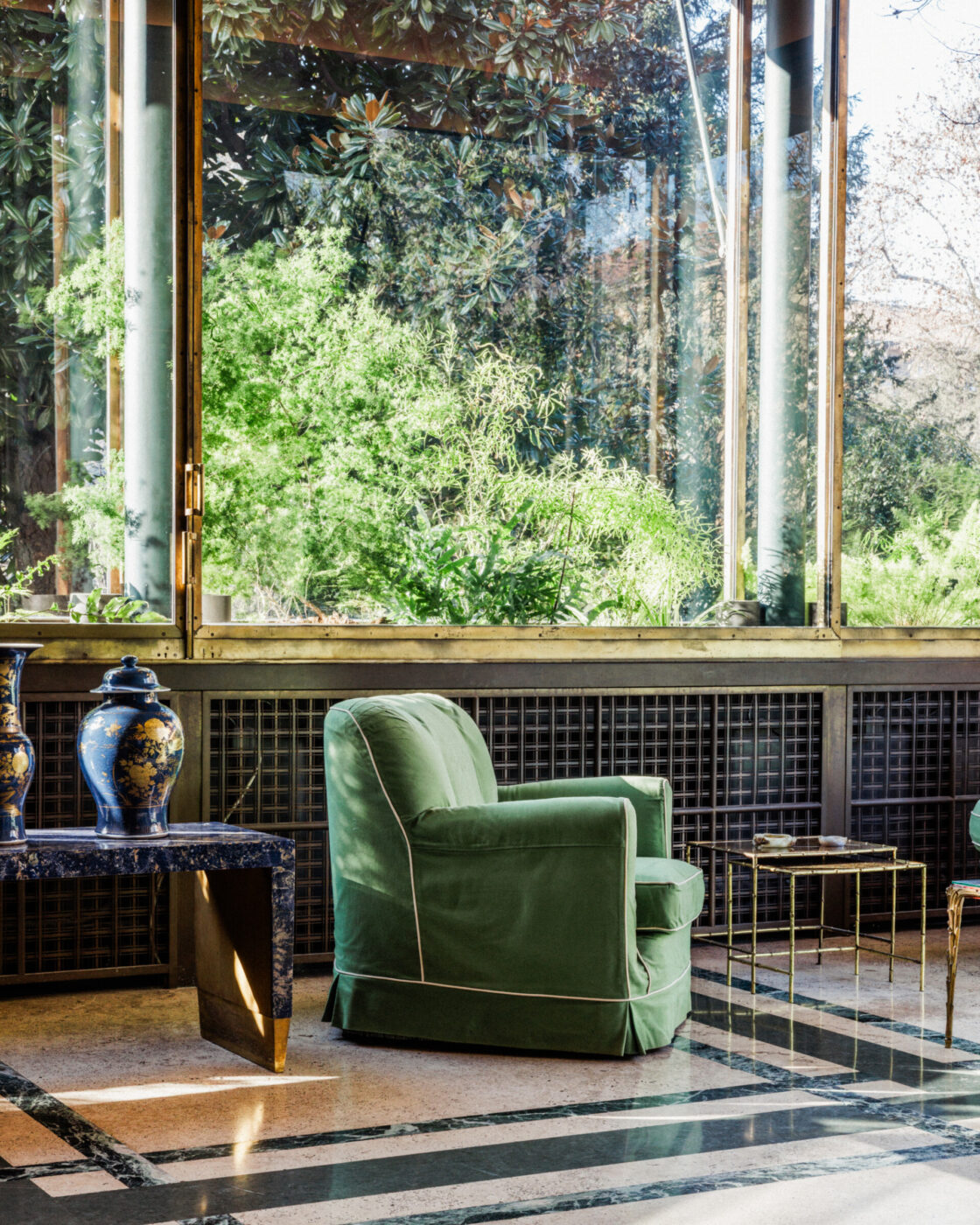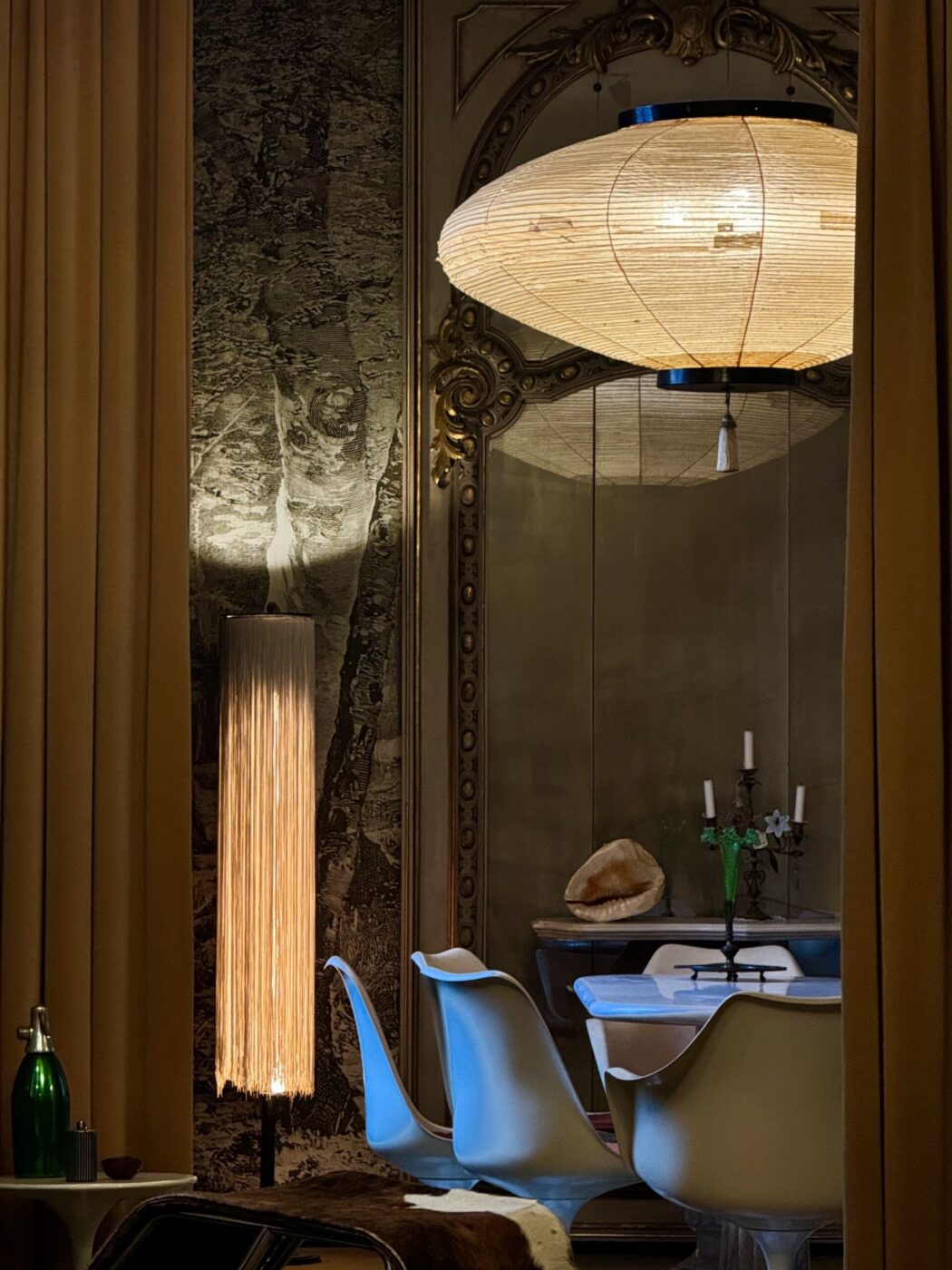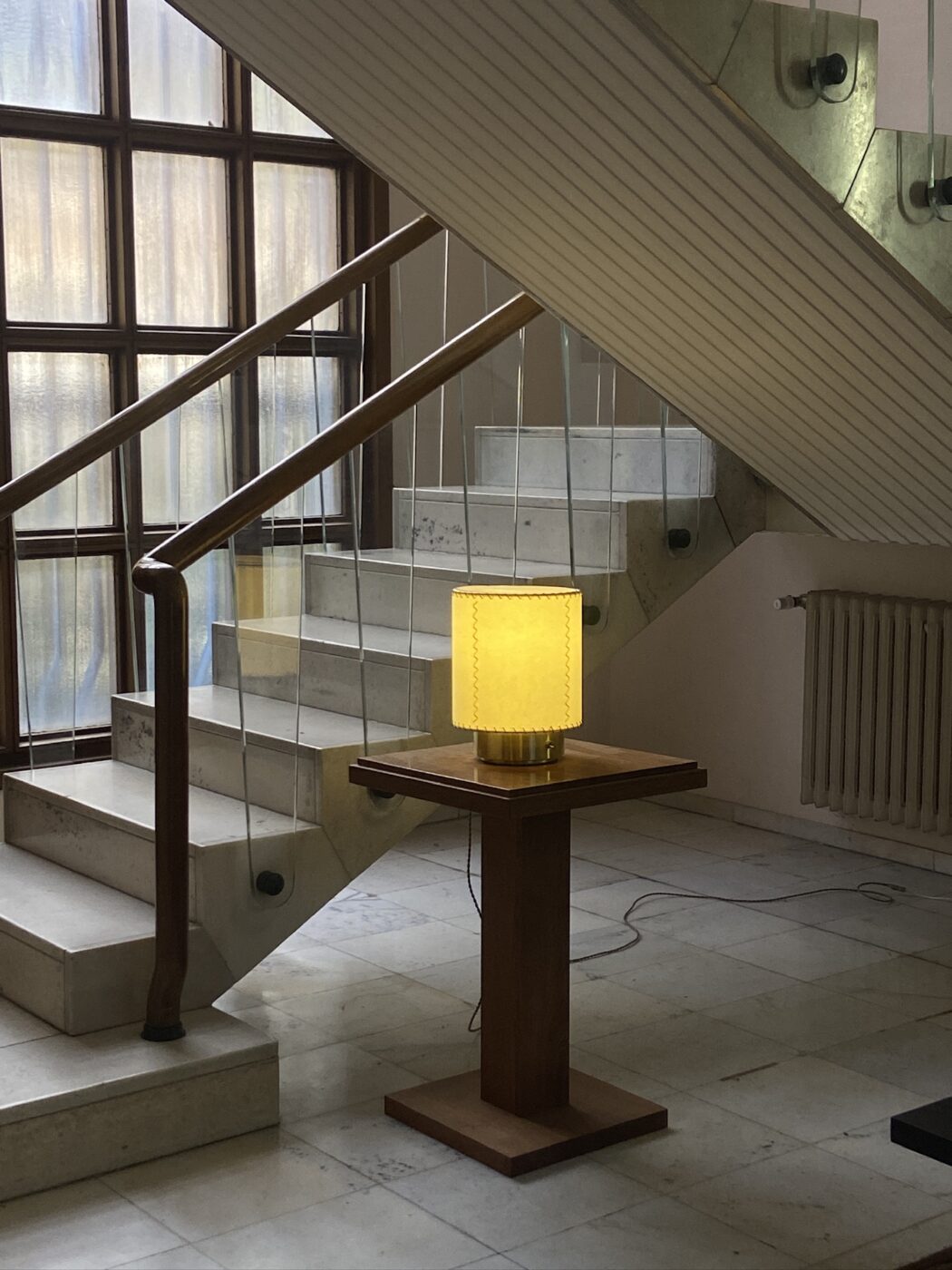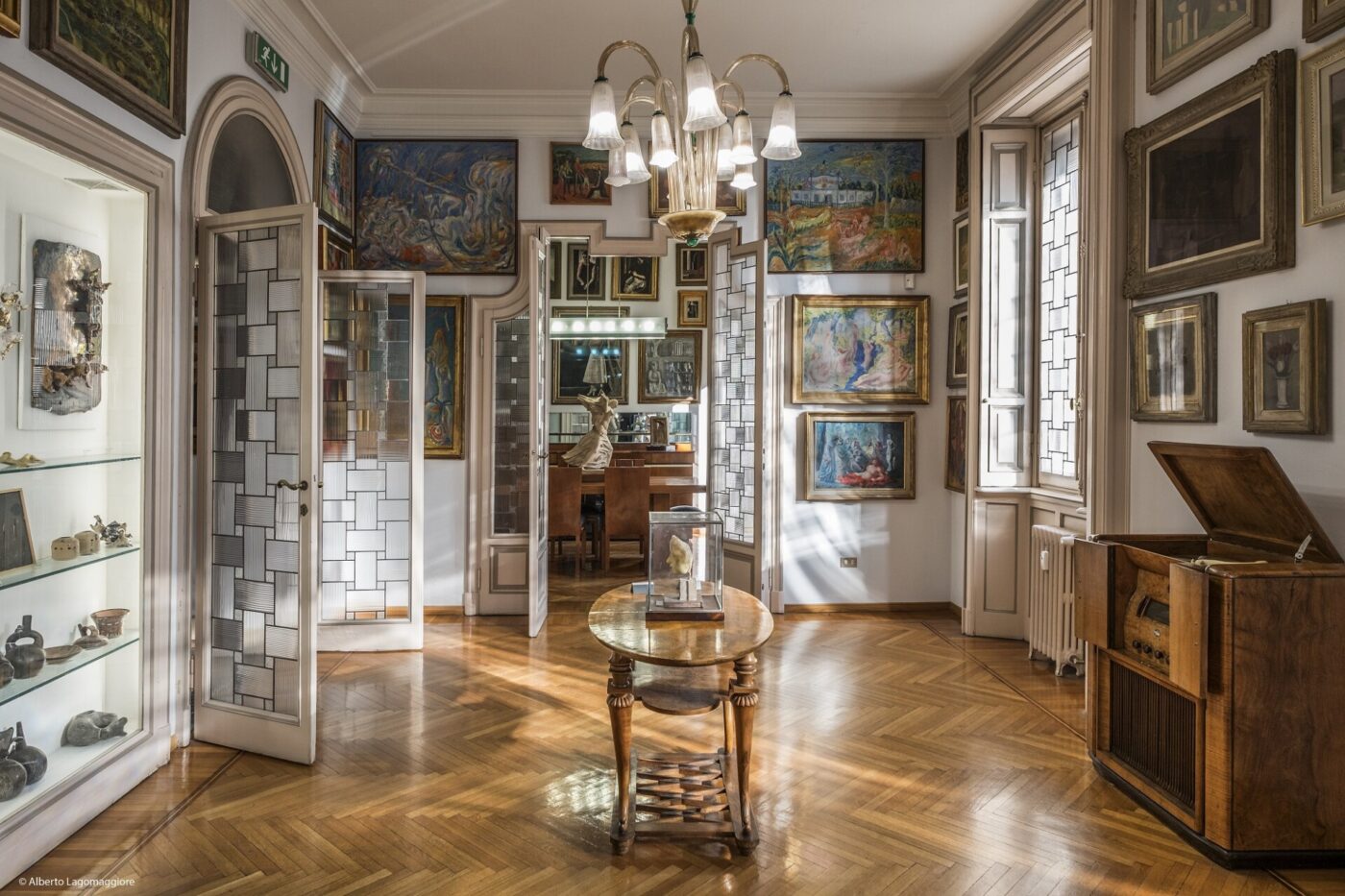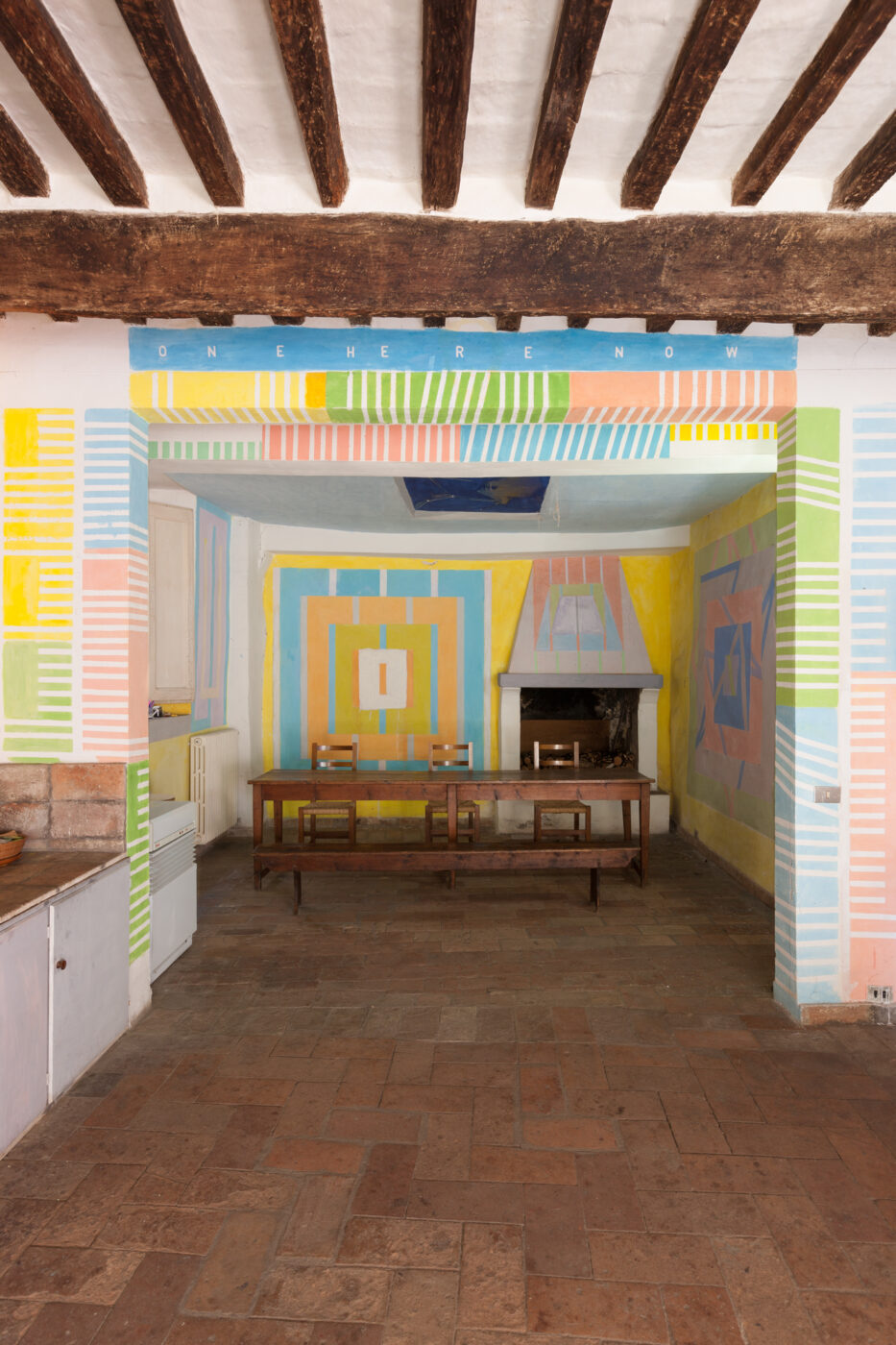Italy’s grand museums get most of the attention—and fair enough, the Uffizi is lovely—but some of the country’s most compelling spaces are the ones you have to ring a doorbell to see. Across the peninsula, behind a handful of unassuming doors, visitable house-museums have opened up a world of private visions: apartments, villas, and studios created (and often lived in) by artists, designers, eccentrics, and aesthetes, each one a universe of its own.
From Carlo Mollino’s wily Turin sanctuary to Osvaldo Borsani’s Rationalist gem in Varedo and Giacomo Balla’s Futurist fantasia in Rome, this list is a choose-your-own-adventure for anyone with a soft spot for design, architecture, and a chic piece of custom furniture.
Here, six design-forward houses across Italy you can actually step inside.
Villa Borsani
Varedo, Lombardy
Halfway between Milan and Lake Como, in the quiet town of Varedo, there’s a house that makes mid-century-design hearts skip a beat. Villa Borsani, completed in 1943, was the personal residence of Osvaldo Borsani—architect, designer, and co-founder of the furniture brand Tecno. It’s Rationalist in its bones, but with an unmistakably personal, poetic soul.
The villa was built to show off the work of Borsani’s family’s furniture atelier, ABV (Arredamenti Borsani Varedo), and it wears that intention proudly. The rooms are filled with custom-designed pieces, many made specifically for this house, and the overall layout is a study in balance and proportion. The pink marble staircase is made from Candoglia marble (like the Duomo di Milano), the entry is lusciously pergola-covered, and the interiors mix clean architectural lines with decorative gestures—many by Borsani’s artist friends, including Lucio Fontana and Fausto Melotti. The villa was also a meeting place for Milan’s creative crowd: Gio Ponti, Arnaldo Pomodoro, and other giants of Italian design all passed through its doors.
Since Borsani’s death in 1985, the house has remained largely unchanged. It’s not always open to the public, but guided tours are occasionally organized by Fondo Ambiente Italiano (FAI) or Alcova, which is currently offering tickets from April 7th through 13th, 2025 in honor of Milan Design Week (you can book tickets here). If you get the chance, go.
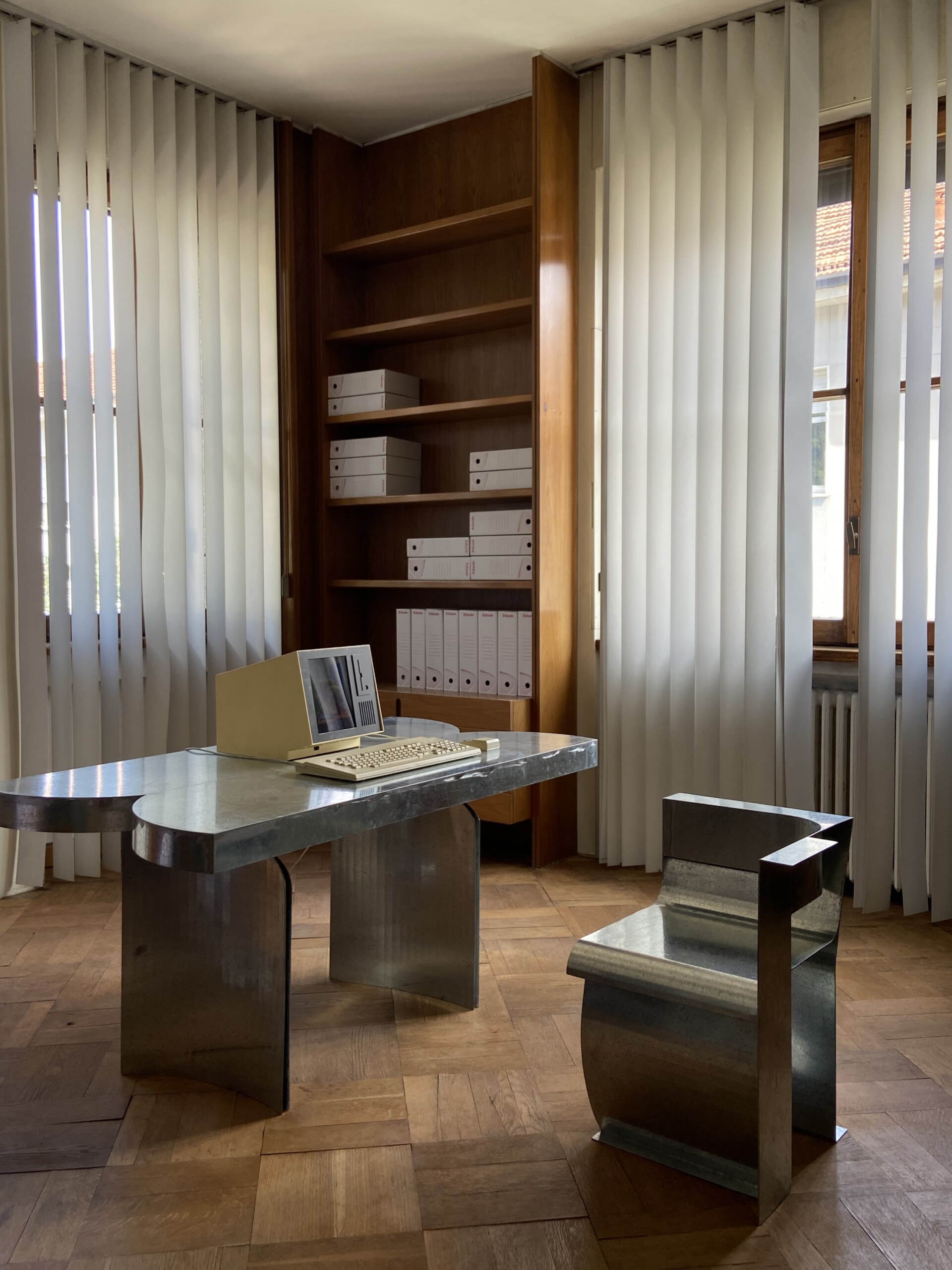
Villa Borsani; Photo by Emilie De Stoop @somewheregroovy
Casa Mollino
Turin
Few houses come with a backstory quite like this one. On the first floor of a 19th-century villa overlooking the River Po is Casa Mollino, a surreal interior designed by Turin’s ultimate design eccentric: Carlo Mollino. Architect, engineer, skier, racing car designer, photographer, pilot, mystic, dandy—Mollino’s résumé is seriously stacked. But nowhere will you get more of a portal into his enigmatic mind than here.
Between the 1960s and his death in 1973, Mollino designed every square inch of this space—not as a home, but as a kind of spiritual sanctuary. He called it The Warrior’s House of Rest, though it’s widely believed he never actually lived there. Some say he never even opened a window.
From the outside, the villa maintains a façade of respectable elegance. But cross the threshold, and you’re transported into a world of zebra-print carpets, leopard upholstery, satin armchairs, erotic sculptures, Saarinen Tulip chairs, damask curtains, majolica tiles, and mirrors everywhere. After Mollino died, the apartment was stripped bare. For decades, its original contents were scattered—until Fulvio and Napoleone Ferrari, a father-son design duo meticulously tracked down and reinstalled 90% of the original furnishings, restoring the space to the version Mollino always imagined. Appointments are required (and limited).
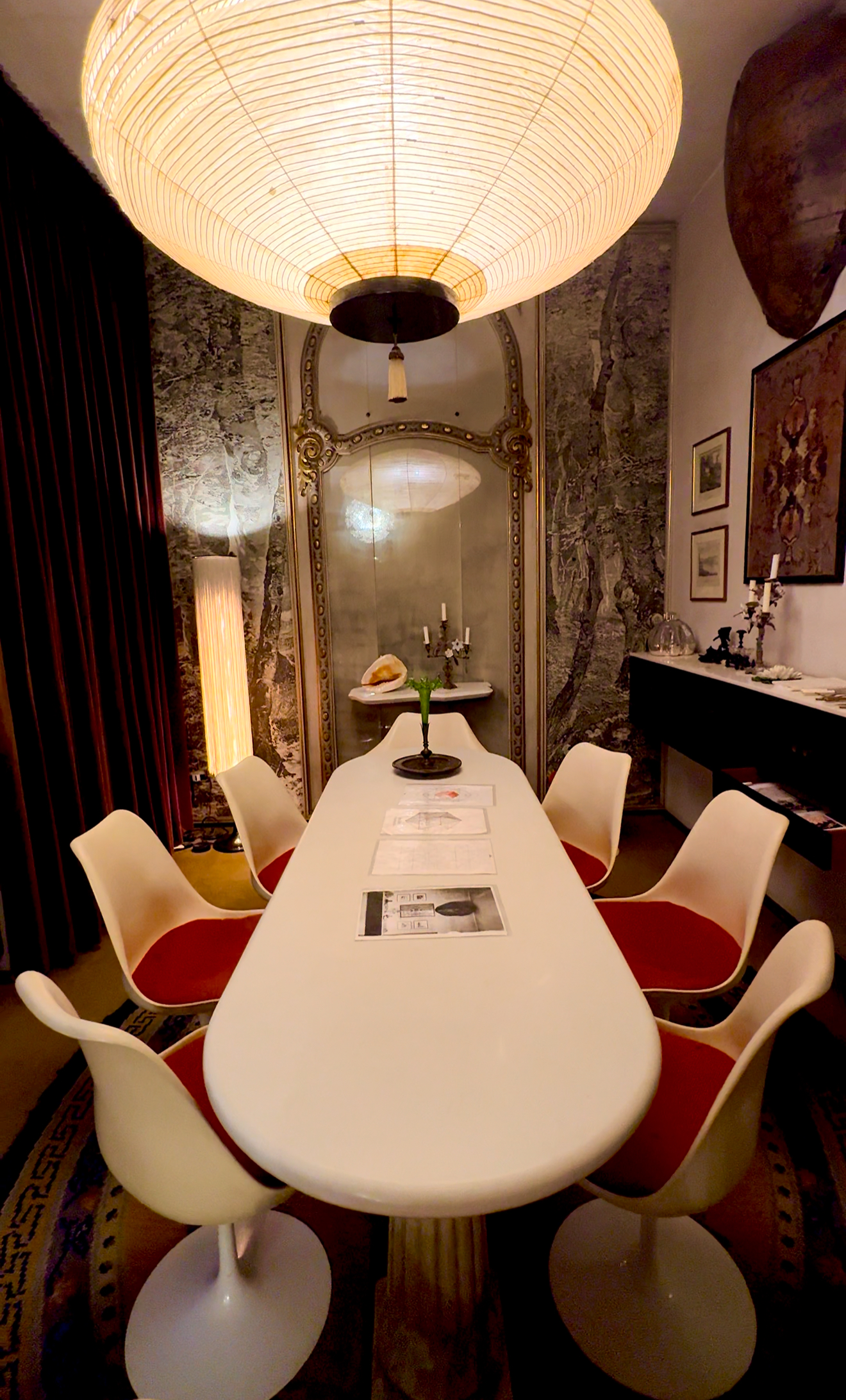
The dining room of Casa Mollino
Villa Necchi Campiglio
Milan
In Milan’s Quadrilatero del Silenzio, Villa Necchi Campiglio is the kind of house that makes you wish you packed linen trousers and a trust fund. Designed by Piero Portaluppi in the early 1930s for the Necchi Campiglio family—industrialists behind the iconic Necchi sewing machines—the villa is a beacon of Rationalist architecture, softened, however, by homely interiors.
Portaluppi’s design is all about clean geometry and symmetry, and the materials are similarly austere: white travertine, red porphyry, dark-green marble, though polished wood adds warmth and richness. Inside, the spaces are elegant and airy, with lacquered paneling, book-filled shelves, and sofas in hues of mint green and mustard yellow. And it was wildly ahead of its time: central heating, air conditioning, an elevator, a dumbwaiter, intercoms—and Milan’s very first private swimming pool, which was also heated (oh, the luxury!). The lush private garden surrounding it is complete with a tennis court.
During WWII, the home was requisitioned by the Fascist regime and became the residence of Alessandro Pavolini, a key figure in the Italian Social Republic. After the war, it was occupied by both the British and Dutch consuls before returning to the family.
In recent years, Villa Necchi has become something of a film star. It served as the setting for Luca Guadagnino’s I Am Love (2009), with a moody Tilda Swinton seen sweeping through its rooms, and more recently appeared as Rodolfo Gucci’s home (played by Jeremy Irons) in House of Gucci (2021).
Today, Villa Necchi Campiglio is managed by the Fondo Ambiente Italiano (FAI) and open to ticketed entry Wednesday to Sunday.
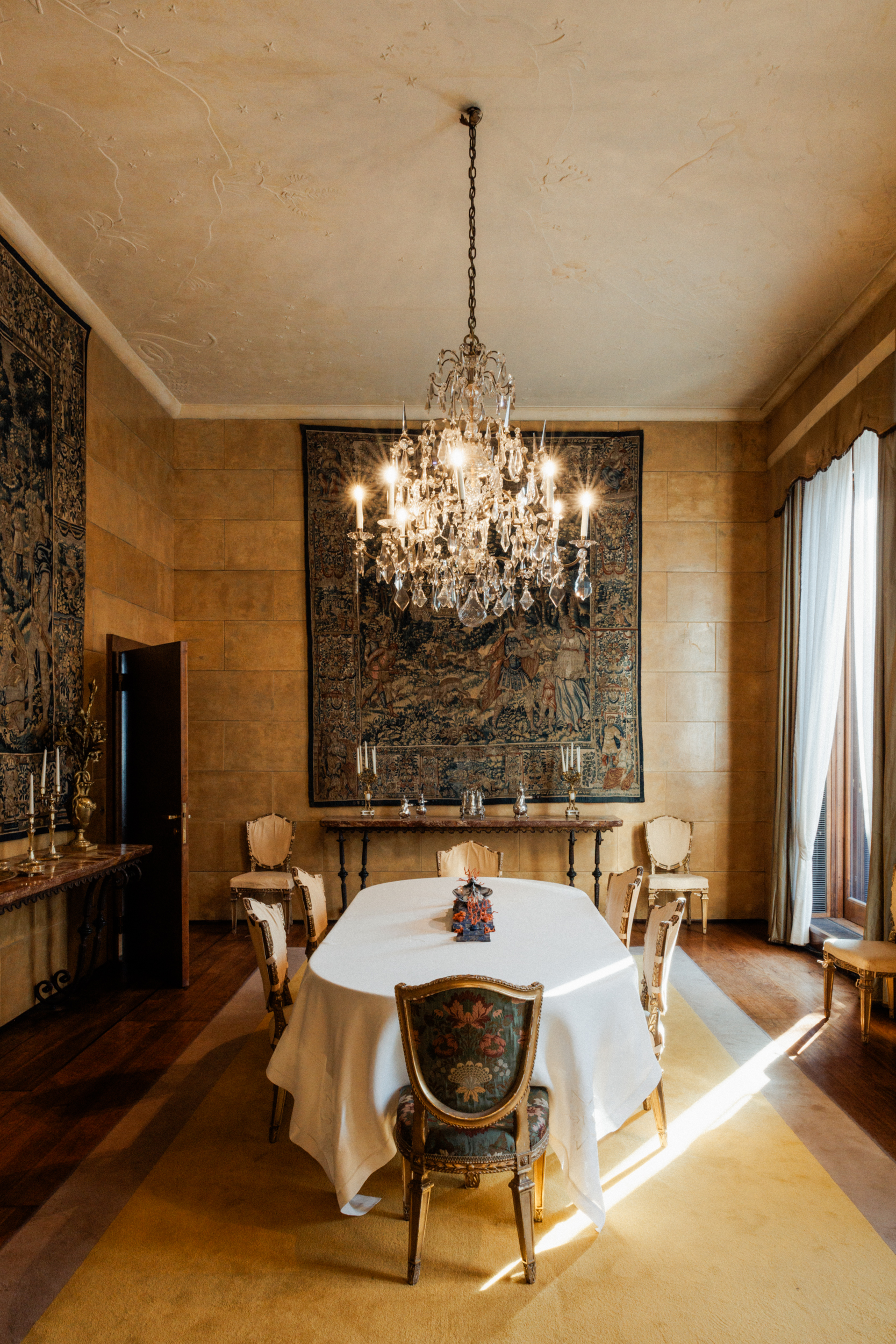
Villa Necchi Campiglio; Photo by Victoria Huisman
Casa Balla
Rome
In Rome’s Prati district, something wild is hiding in plain sight. On the fourth floor of 39b Via Oslavia is Casa Balla—a home that doubled as a three-dimensional manifesto on Futurism. From 1929 until his death in 1958, Giacomo Balla, one of Italy’s key proponents of Futurism, lived here with his wife and two daughters, Luce and Elica (yes, their names mean “Light” and “Propeller”). Together, they turned the modest apartment into what’s often called a “temple of Futurism”.
The psychedelic playground of color, pattern, geometry, and motion is inspired by the 1915 manifesto, “Futurist Reconstruction of the Universe”, he co-wrote with Fortunato Depero. Casa Balla is that theory made real. Or surreal.
Balla designed everything in this house/workshop/studio: the chairs, the tables, the lamps, the curtains, the tablecloths, even clothes—often from scrap materials. (In his “Futurist Manifesto of Men’s Clothing”, he wrote, “We must invent futurist clothes, hap-hap-hap-hap-happy clothes, daring clothes with brilliant colours and dynamic lines. They must be simple, and above all they must be made to last for a short time only in order to encourage industrial activity and to provide constant and novel enjoyment for our bodies.”)
When the Balla daughters passed away in the ‘90s, the doors of the apartment were closed until 2021, when it reopened for the 150th anniversary of Balla’s birth thanks to the MAXXI museum. In 2023, the Italian State just bought it for a rumored 6 or 7 million euros—worth every painted centimeter. For now, visits are by guided tour only, organized by the MAXXI Museum, and due to the apartment’s size, spots are limited to 12 per group (translation: book ahead).
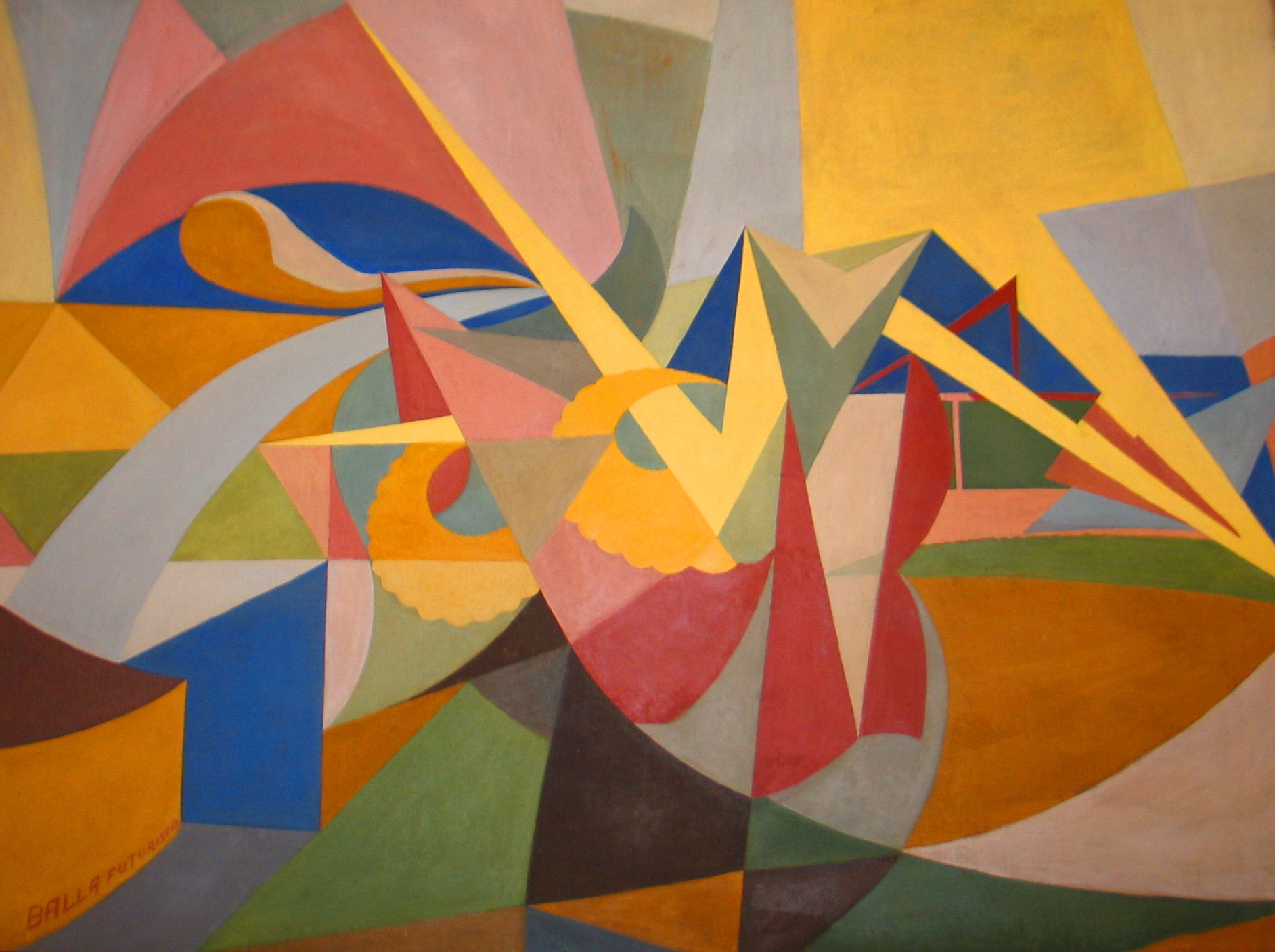
Futurist artwork by Giacomo Balla. You can find similar colors and patterns on the walls at Casa Balla; Photo by Boris Doesborg via Flickr
Casa Museo Boschi Di Stefano
Milan
A short stroll from Porta Venezia, on the second floor of a handsome 1930s Art Deco building, you’ll find Milan’s most underrated art experience: Casa Museo Boschi Di Stefano. Once the private apartment of Antonio Boschi, an engineer, and his wife Marieda Di Stefano, a ceramist, it now houses a staggering personal collection of over 300 works of Italian art—on view for free.
The couple were true insiders in Milan’s art scene and spent their lives collecting work from the 20th century’s best and boldest: Fontana, Sironi, De Chirico, Morandi, Boccioni, and more. Think of it as the who’s who of Italian modernism—spread across ten rooms, arranged salon-style, where you can stand nose-to-canvas with some of the country’s most iconic pieces.
The apartment itself is no slouch either. It was designed by Piero Portaluppi (of aforementioned Villa Necchi fame), and still features original furnishings—like a 1936 dining room set by Mario Sironi—that give the space a lived-in elegance. It feels less like a museum, more like you’ve been invited into the home of two exceptionally stylish art nerds who just happened to collect masterpieces.
While the museum is officially managed by the Municipality of Milan, there’s a warmth and personal touch courtesy of the dedicated volunteers from the Touring Club Italiano (TCI), who greet guests and share insights about the collection. Open Tuesday to Sunday, with no ticket required, it’s one of the city’s true hidden gems.
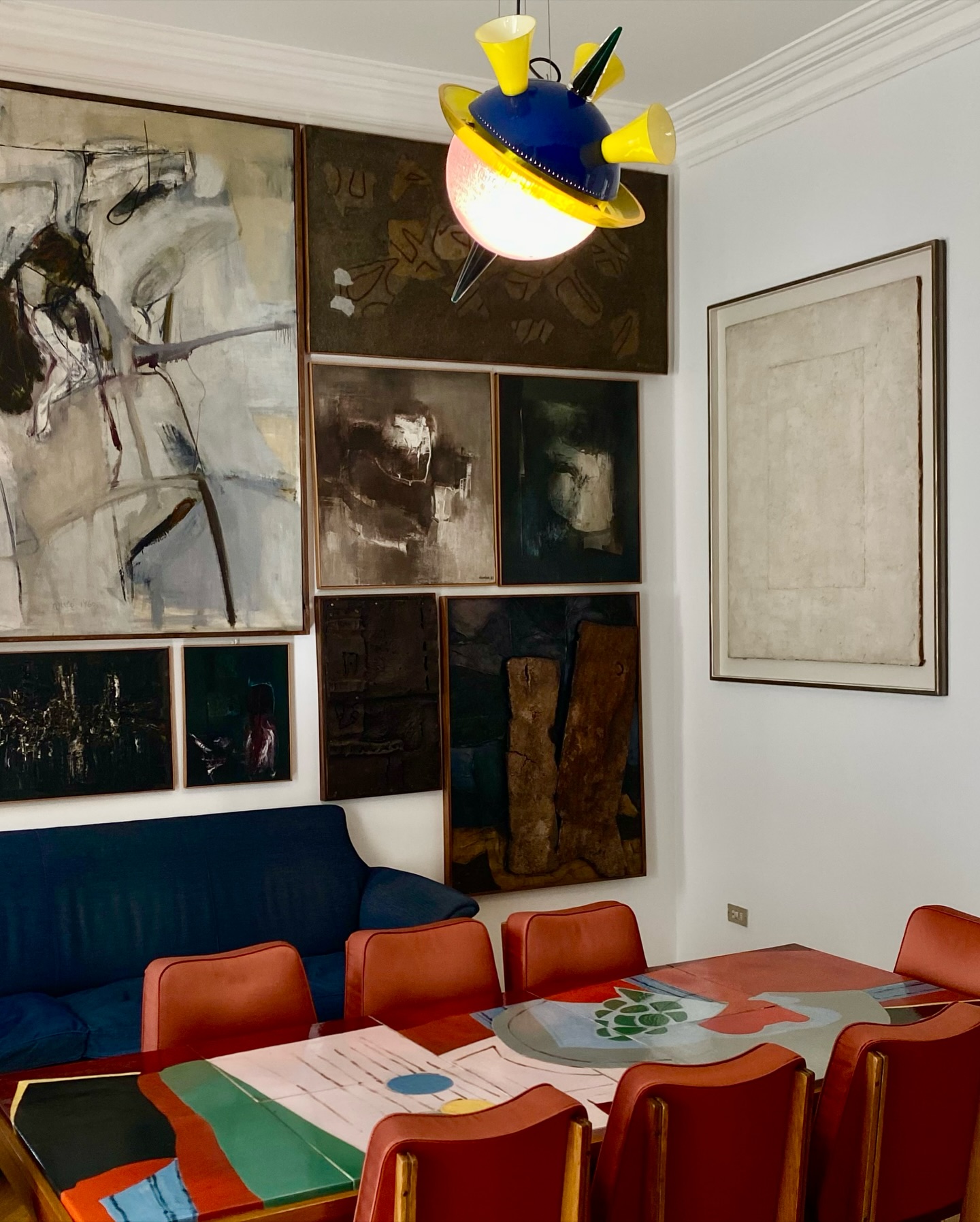
Casa Museo Boschi di Stefano; Photo by @caterinafabbrici
Casa Dipinta
Todi, Umbria
At first glance, number 25 on Via delle Mure Antiche in Todi looks like a typical 19th-century Umbrian house. But step inside, and you’re no longer in Umbria—you’re in the mind of Bryan O’Doherty. Also known by his conceptualist alter ego Patrick Ireland, the Irish-born, New York-based artist bought the house in 1975 with his wife, art historian Barbara Novak, as a quiet holiday escape far from the New York art world. That didn’t last long.
By 1977, O’Doherty began painting the house from floor to ceiling in vivid acrylics—a dizzying, joyful burst of geometry, color, optical tricks, and coded language. What started as a vacation house turned into one of his most personal and immersive works—part identity meditation, part three-story installation piece.
There are rainbow-hued staircases. Lines and threads that stretch across walls, challenging your sense of perspective. Phrases in the ancient Ogham alphabet, a script used in Ireland until the 7th century. Painted windows frame imagined vistas, and strategically placed chairs invite contemplation of the Umbrian landscape. Even the couple’s silhouettes flank the bed, a sweet nod to their bond with each other and with Umbria.
At the entrance, three words set the tone: Uno. Qui. Ora. (One. Here. Now.)—both an invitation and a thesis. Visits are by appointment only, through CoopCulture.
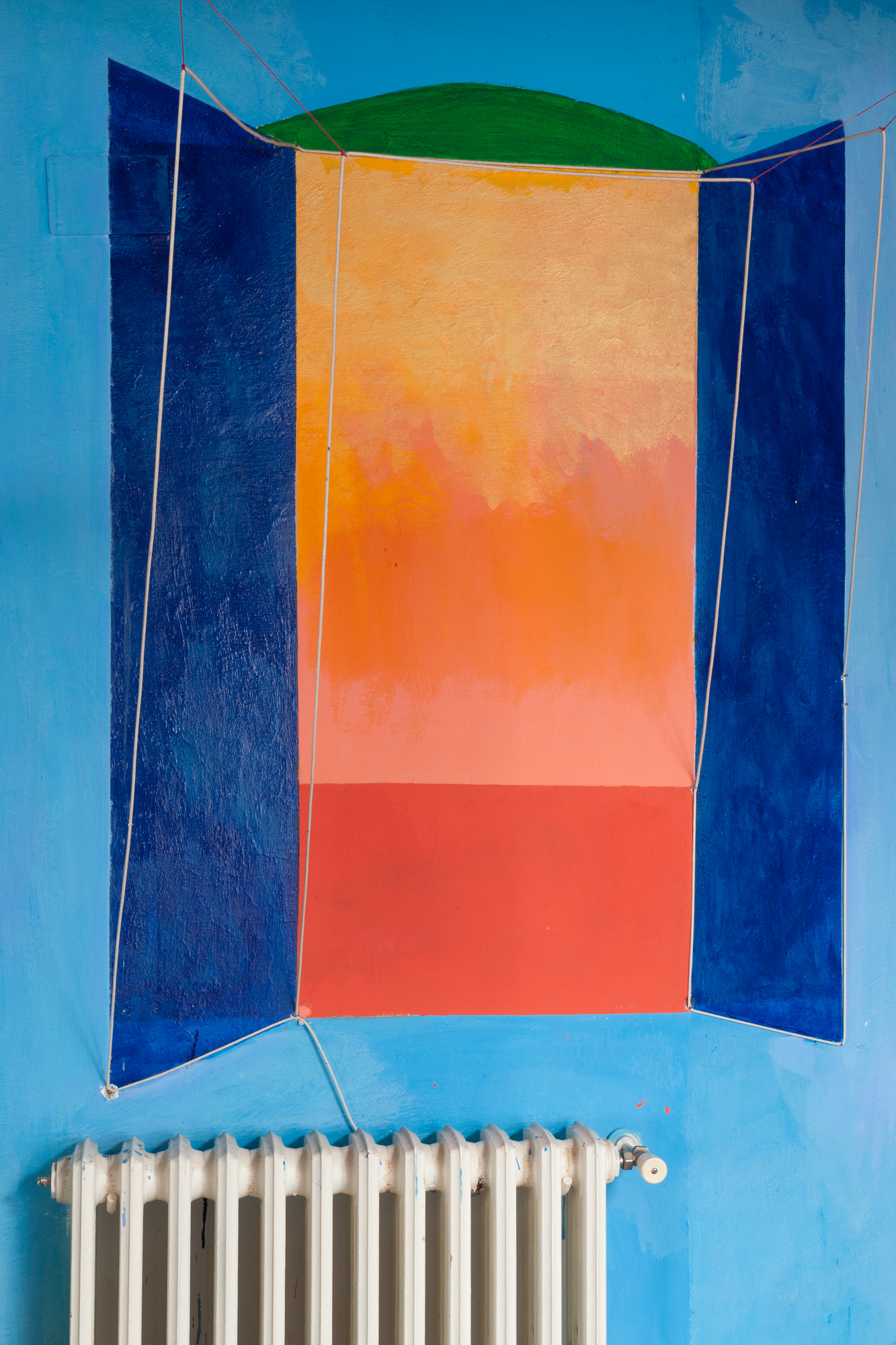
Casa Dipinta; Photo by George Tatge
